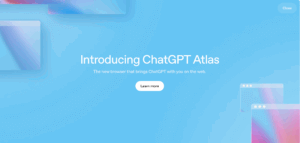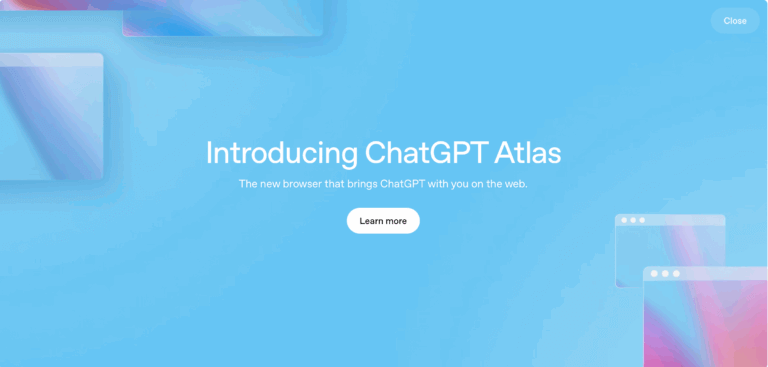The web browser is just about as old as the internet itself. Since the dawn of [online] time, adventurers have been able to open an app called a browser on their device and use it to browse/surf/navigate the web. It was the conduit to the World Wide Web.
As time went on, the browser obtained more features than merely allowing you to navigate to a website. With the help of Google and others, you could get to your mail, chat via instant messages, write articles, and even edit video all within a browser.
Soon enough, computers emerged that were entirely browser-based. No more separate apps, now everything you do on a computer can occur within the operating system of a browser.
And now the browser is evolving once more.
ChatGPT Enters the Browser Battle
For a while now, ChatGPT has allowed you to toggle a Search option and treat the chat tool like a search engine. Earlier today, they announced a step further.
ChatGPT Atlas isn’t just a search engine. It’s an entire AI-powered web browser. It isn’t just looking to replace Google and Bing and DuckDuckGo. It’s looking to replace Chrome and Firefox (as well as Safari and Edge).
According to OpenAI, ChatGPT Atlas allows you to “Bring ChatGPT with you across the web for instant answers, smarter suggestions, and help with tasks—all with privacy settings you can control.”
It’s currently available as an app on Apple computers, while access for Windows, iOS, and Android is “coming soon.”
Here’s how the home screen looks on my MacBook:
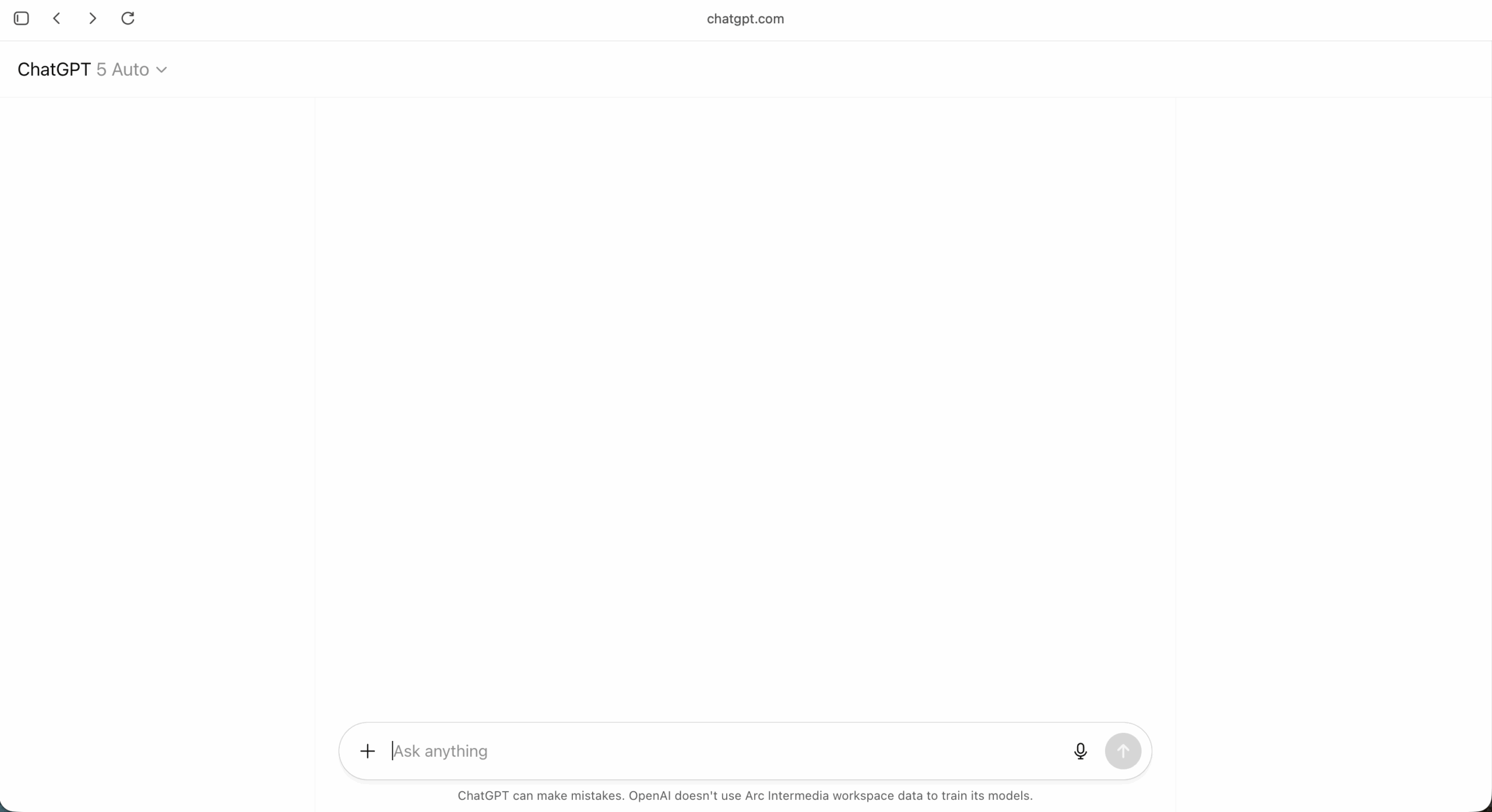
It’s basically ChatGPT. Then, if you enter a prompt, you get this:
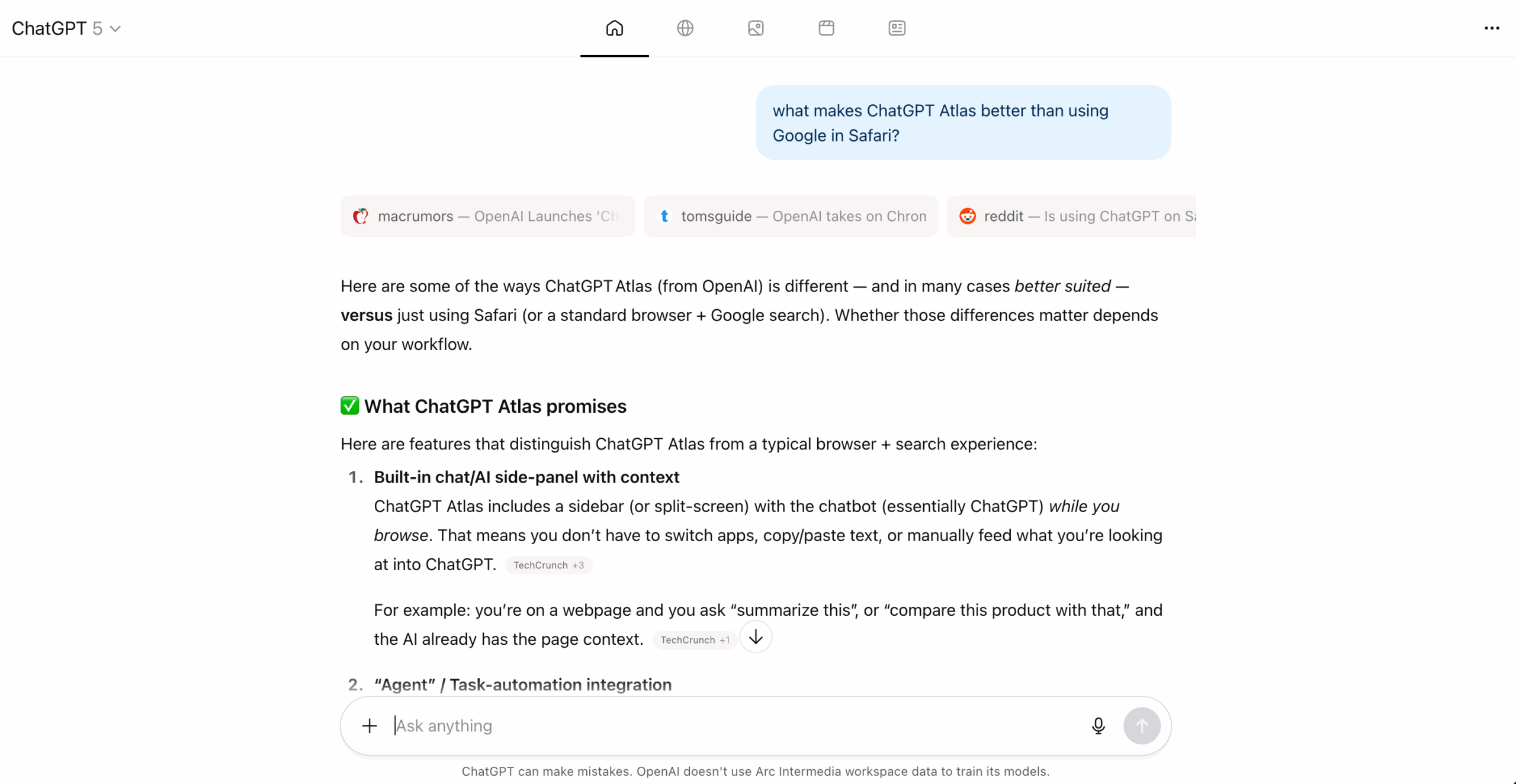
Those icons at the top are for Search, Images, Video, and News. Plus there’s a left sidebar (currently minimized) identical to the ChatGPT UI that shows your installed GPTs and prompt history, and a right sidebar (currently minimized) that is a chat window.
Here’s what you get when you click on the Search icon. Does it feel familiar?
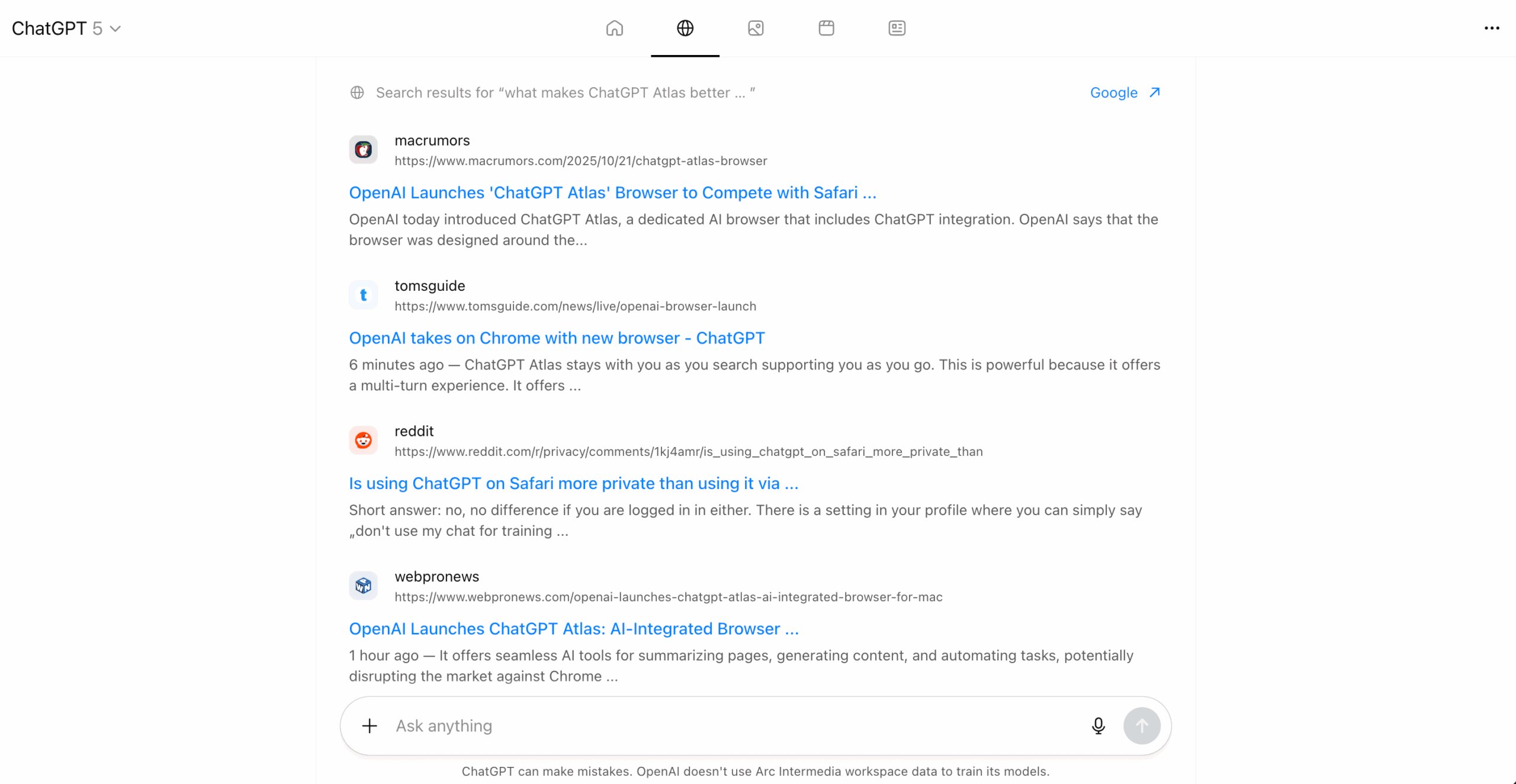
But of course, what makes this different from the ChatGPT app or using ChatGPT in your actual browser is that it is an actual browser. You can use it to visit any webpage, like my bio on the Arc Intermedia website:

Where the real magic is supposed to occur is in remembering your searches and interest (beyond simply a History list) as well as enlisting AI agents to conduct tasks on your behalf. In that scenario, ChatGPT Atlas isn’t just a browser, it intends to be the UI form of your AI assistant.
When I expand the ChatGPT function on my bio page and ask what it could do, it ignores that I’m on a webpage and answers as your standard ol’e ChatGPT.
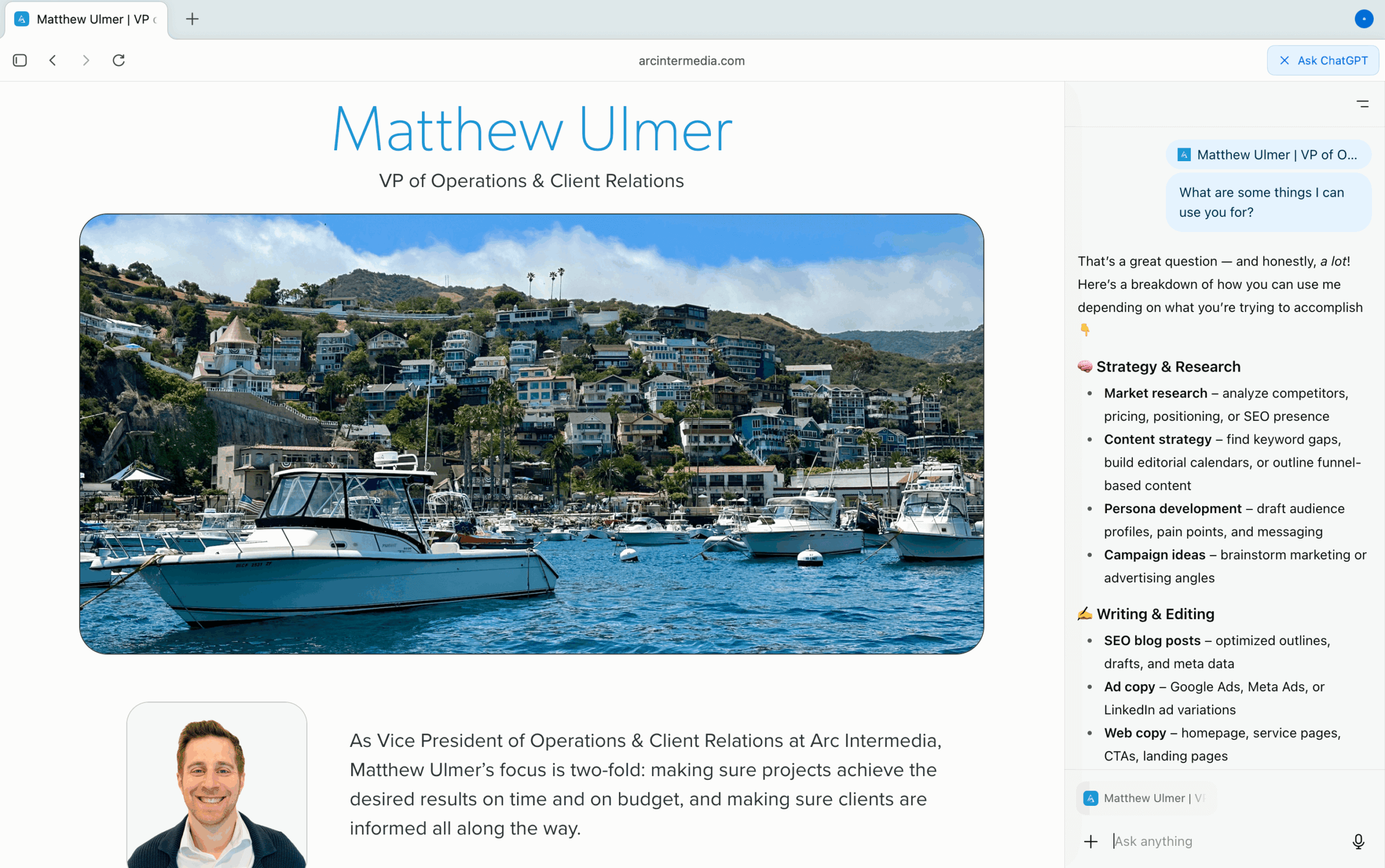
That’s not a fair test, though. To have it put the “browser” in the web browser, you need to manually toggle it into Agent mode, or ask it something like “Can you use my browser to find such and such,” at which point it engages agent mode, asks for permission to take over your browser, and gets to work.
Seriously, you can actually watch the cursor move on the screen as it provides running commentary along the righthand side. For an example, I conducted the ever popular agentic AI test of finding a hotel. Here is the final result:
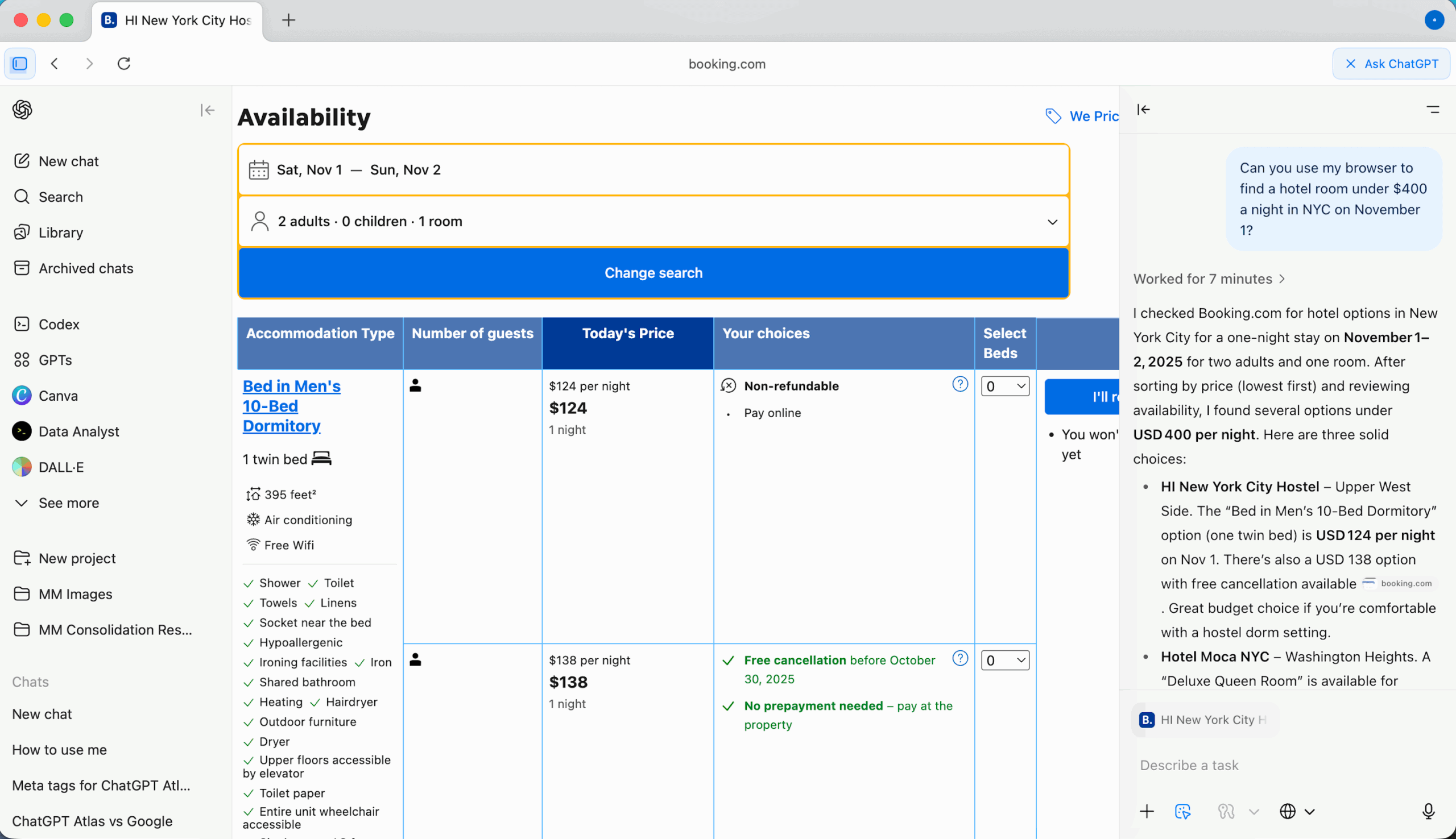
And here are a few steps along the way:
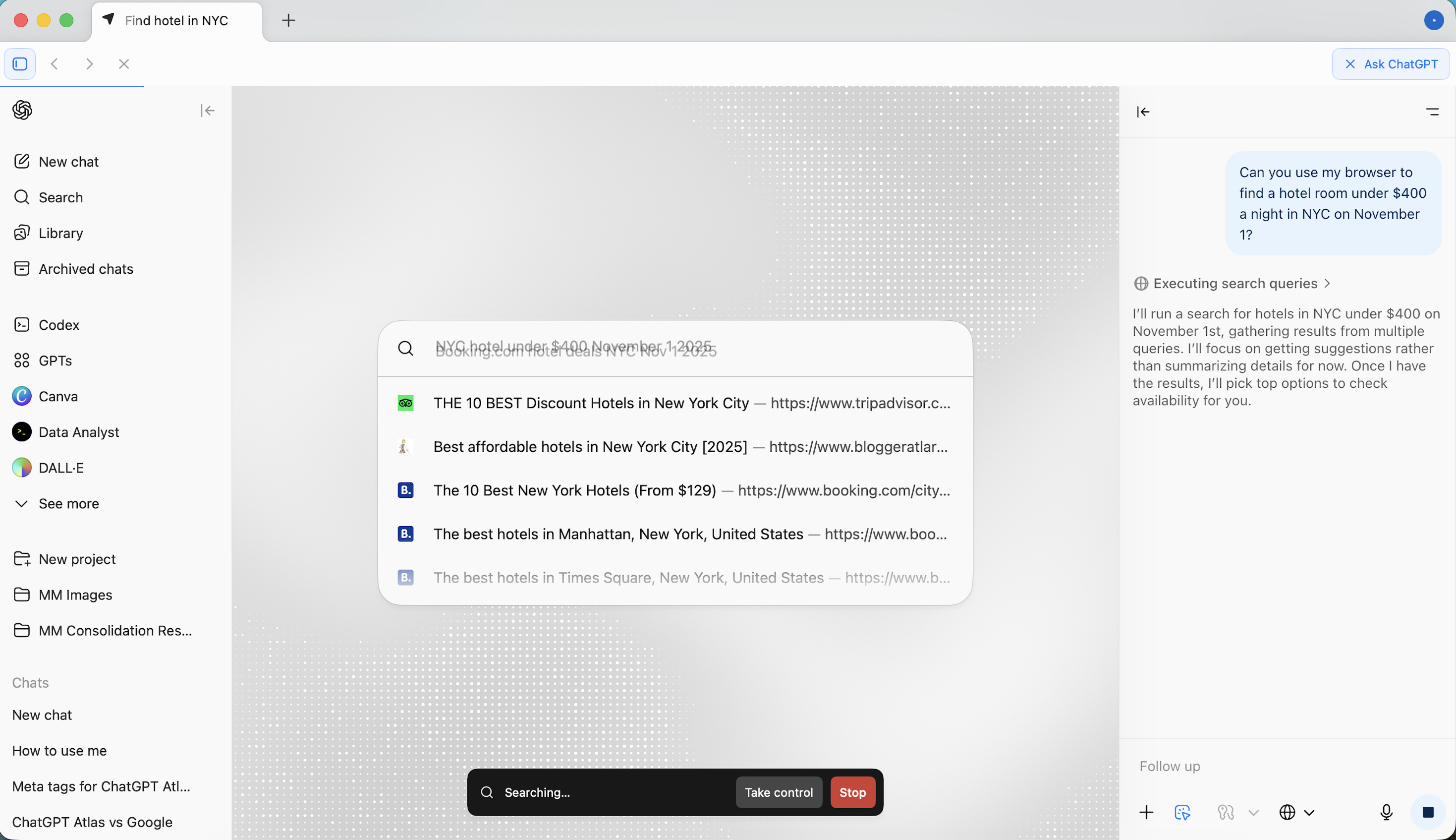
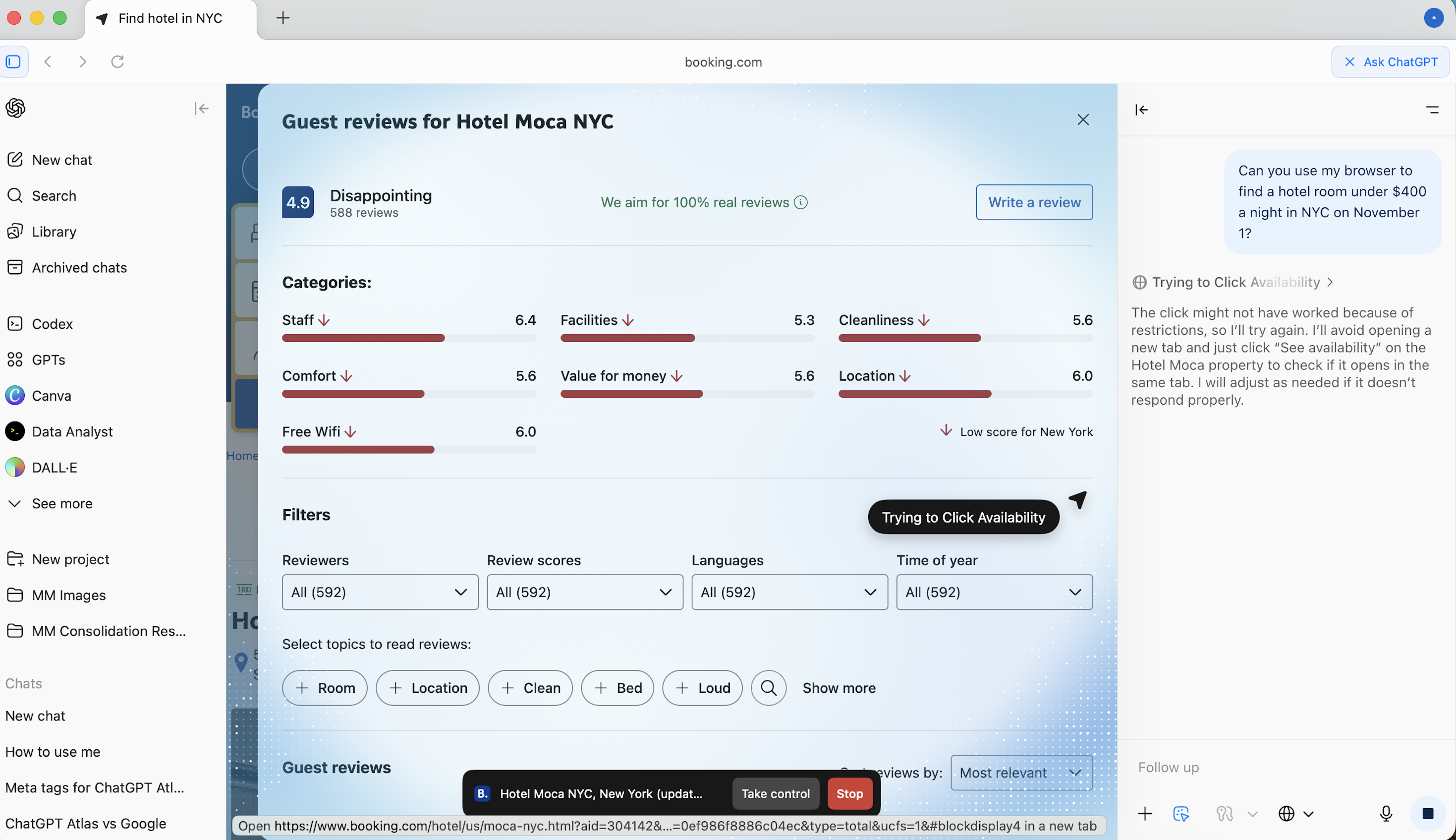
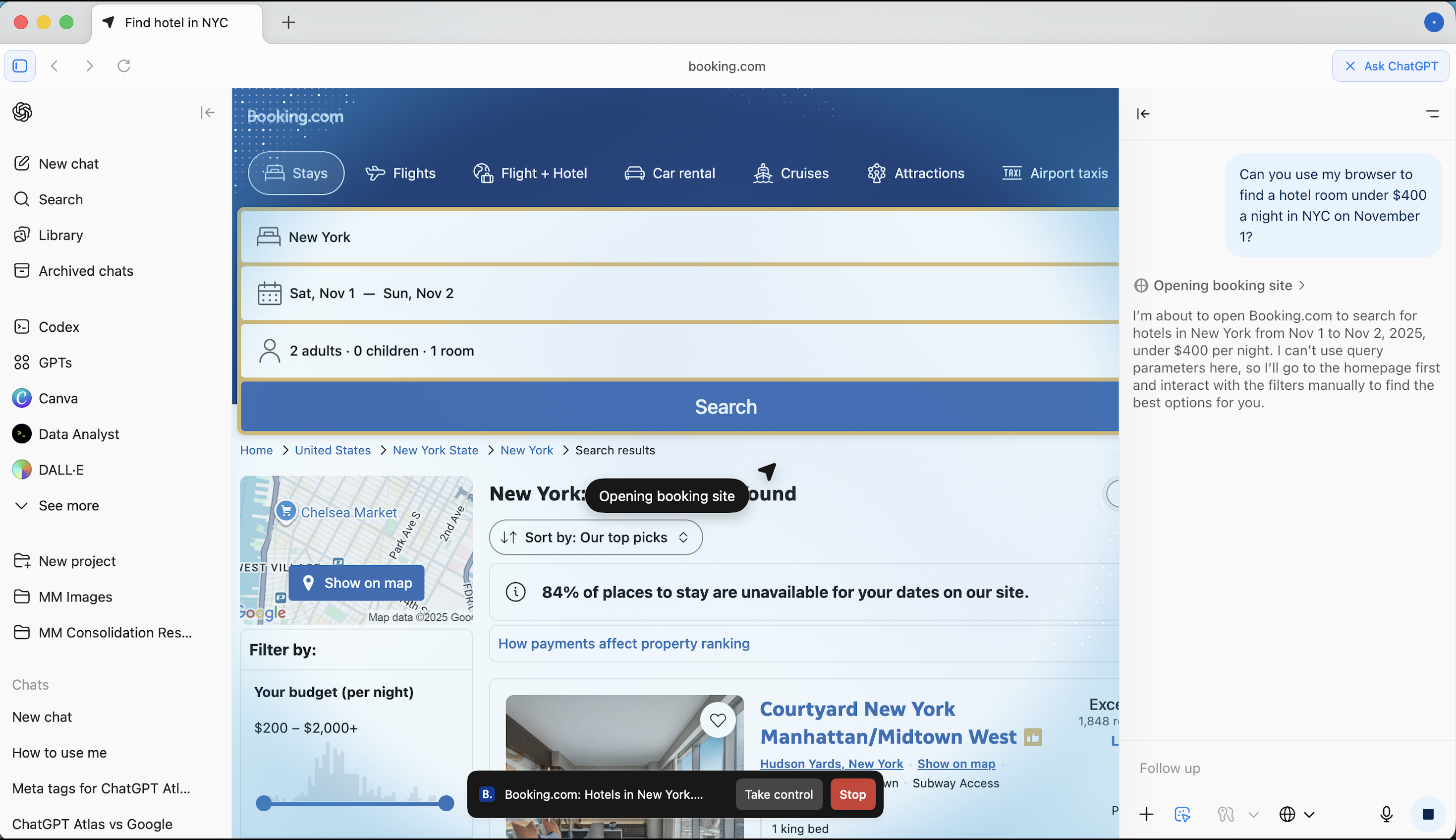
The Browser of the Future?
OpenAI is not the first to attempt this. The Arc Browser tried a form of this two and a half years, and Perplexity.ai recently launched its own AI-powered browser called Comet. Plus, there’s the Google suite of tools along with Google’s AI Mode within Google Chrome.
But the Google concoction isn’t yet what this is supposed to be, and while Perplexity owns 6.6% of the AI search marketshare, ChatGPT hogs 60.7% of it.
So ChatGPT Atlas will be the true test of whether AI UI is the future of web browsing. Do you think it could convince you to replace Chrome or your current browser of choice? Are you ready for AI to do all your web-enabled tasks for you?
By the way, while you’re here, no matter what browser or search tool your audience uses, you need to ensure your company offerings are optimized for AI search visibility. That’s what Arc Intermedia is here for.

